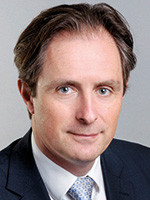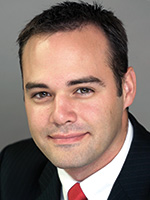

Following the financial crisis, the credentials of money market funds were brought into question, leading to regulatory reform of the multi-trillion dollar global industry. With phasing in of new EU rules for the MMF industry completed in March, a timely BNP Paribas Asset Management (BNPP AM) webinar considered their implication for investors.
Watch webinar now

Philippe Renaudin
Money Market CIO
BNP Paribas Asset Management

Gregory Chereau
Money Market Investment Specialist
BNP Paribas Asset Management
The financial crisis in 2008 triggered huge turmoil across money markets and led to deep concerns about the stability of the industry that culminated in it being subject to reforms in the US and Europe.
In Europe, the EU began implementing new rules for the sector last year, with new funds needing to be compliant from 21st July 2018. Existing funds were given until 21st January 2019 to submit their updated prospectus to their national competent authority, by 21st March these needed to be approved and to have the new provisions implemented in all the funds.
Philippe Renaudin, Money Market CIO, BNP Paribas Asset Management, explains that under the new EU regime, money market funds (MMFs) are categorised into two types of funds: short term and standard. Traditionally, both CNAV and VNAV funds have been offered by the European money market industry. The EU reform however restricts the use of CNAV funds to government portfolios and creates a whole new category for non-government funds, the low volatility net asset value (LVNAV) fund. All three are available in the short-term MMF category, while standard MMFs can only be managed under the VNAV format.
Gregory Chereau, Money Market Investment Specialist, BNP Paribas Asset Management, says liquidity is an important consideration in the reforms. CNAV and LVNAV funds will have to constitute minimum 10% daily and 30% weekly liquidity pockets. For VNAV products these thresholds are set at 7.5% and 15% respectively.
“The EU regulator has included very strict guidelines to enhance the liquidity profile of funds and avoid runs in case of extreme events in the industry. Portfolio managers will have to offer liquidity pockets that are sharply higher than these minimum thresholds in order to avoid any prospectus breach, especially on AAA-rated funds that are usually more volatile in terms of asset variations. Even before the reforms, minimum thresholds on BNPP AM’s products ranged from 22% to 25% of daily liquidity in the AAA-rated money market funds.”
Renaudin points to risk management issues as another major aspect of the reforms: “Asset managers now have to apply liquidity, rate and even credit spread stress tests on the different portfolios on a regular basis to be sure they are robust and that the liquidity is efficient.”
Mark-to-market
On the valuation front, it was possible before the new rules to adopt an amortised cost approach on all instruments whatever their tenor. That is now banned: “We have to be full mark-to-market or mark-to-model on securities in the funds, with an option of an amortised cost approach for LVNAV instruments below 75 days. BNPP AM’s approach to managing LVNAV and VNAV funds is to have a single pricing policy (eg full mark-to-market/mark-to-model), as we believe that is in the interest of shareholders.”
The EU reform also aims to introduce greater transparency and rigour in MMF reporting: “Asset managers must publish threshold key indicators of their MMFs weekly – it used to be monthly. They also need to provide regulators with many indicators on the quarterly basis. That means the regulators can create a database on funds to ensure all comply with the new guidelines.”
Chereau stresses the continuing importance of MMFs for treasurers and investors generally, noting they have several advantages over other types of daily liquidity instruments or deposit instruments. They offer security because they only invest in very highly rated papers. Liquidity and diversification are further positives: “Whenever you wish to get your money back with MMFs, it is very easy to do so. And you can invest in a wide range of issuer types but also gain diversity in terms of geographies, business models, sub-sectors for corporates and so on.”
Active management of both credit and interest rate risk and even liquidity risk are further important attractions: “It delivers added value to investors because the managers can respond rapidly to different market environments.”
More broadly, Chereau says the overriding objective at BNPP AM is to help investors optimise their cash balance by offering a wide range of solutions. “They can have a short-term money market fund product if that suits their needs. Or if the intention is more strategic, with longer-term investment for instance being required, then they can choose from within our standard money market funds offering. It is important they have access to the full spectrum of solutions.”
If you missed the webinar and would like to hear the full recording:
Watch webinar now